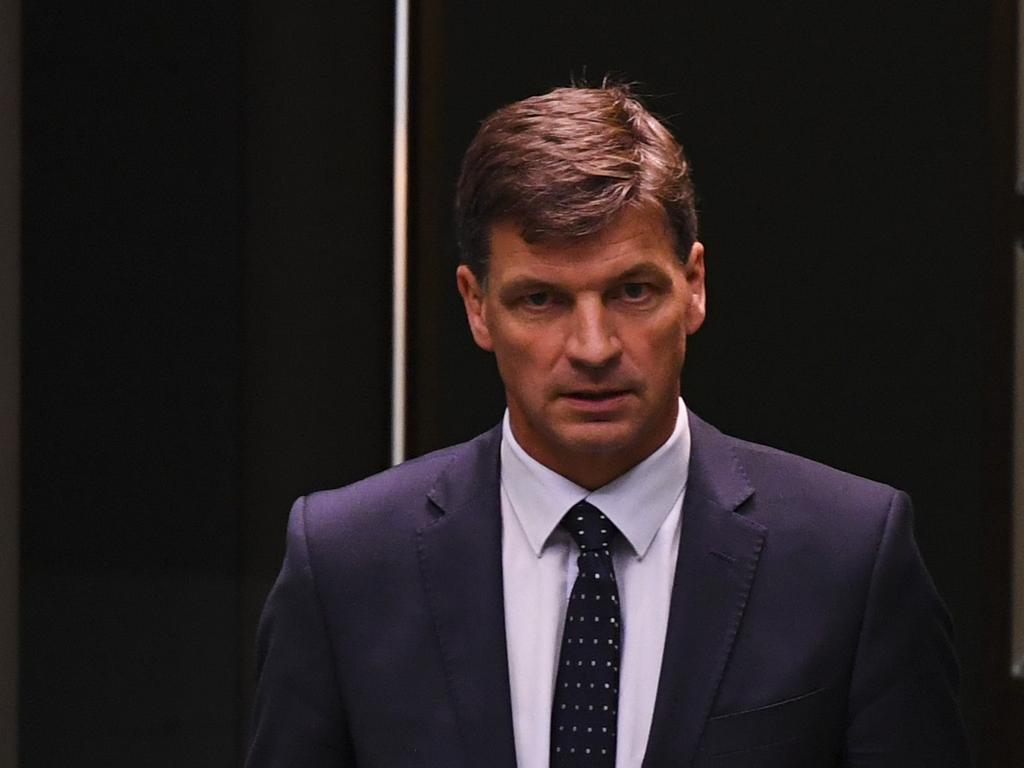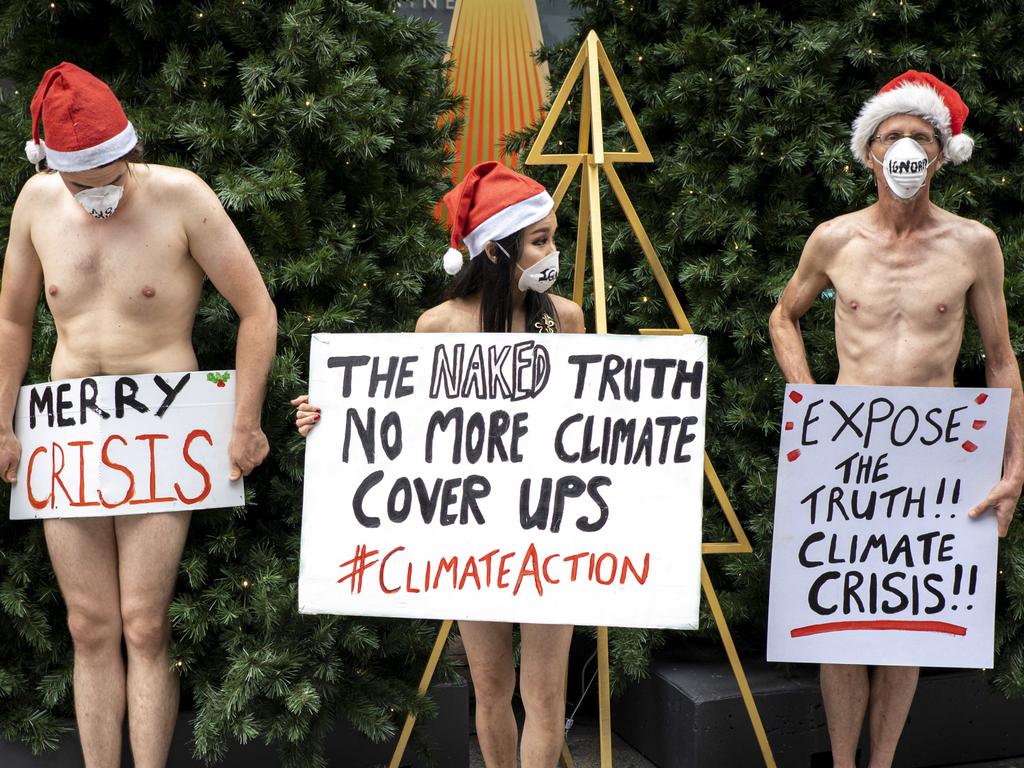Firestorms follow move away from cool burning
The facts are too conveniently ignored when discussing ways to manage climate changes.

Finlay’s thesis examined problem bushfires between 1881 and 1981. What she found after plotting the historical data on a graph was that there was a marked increase in the size and frequency of fires after 1919. This was when bushfire-reduction operations increasingly moved away from traditional indigenous practices such as low-intensity cool burning.
Finlay says this detailed correlation between the accumulation of catastrophic fuel loads and the frequency of extreme bushfires made it possible to forecast the dramatic increase in firestorms we have seen in the 21st century.
“For years, I energetically sent this predictive model to government agencies, in particular bushfire services, the media, coronial and parliamentary inquiries and so on,” she says. “Horribly ignored, it proved horribly accurate.”
Finlay has the support of forester Vic Jurskis, who has written a book on fire stick ecology and how indigenous Australians managed the landscape with fire.
In an open letter to the Prime Minister, premiers, chief ministers and opposition leaders in November, Jurskis said this season’s bushfire situation was neither unprecedented nor unexpected.
“This latest holocaust is a direct consequence of unprecedented accumulation of 3D continuous fuels as a result of green influence on politics,” Jurskis says. “It’s all about fuel, not climate.”
Half a century ago, Athol Hodgson, who later became chief fire officer of Victoria, explained the simple physics: doubling the available fuel usually doubles the rate of spread of the fire and increases its intensity fourfold.
Jurskis says control burning over large areas cheaply and effectively reduces the incidence of high-intensity wildfires and minimises damage.
When this year’s fire season finally ends, Finlay’s research and Jurskis’s theories no doubt will be offered to a federal government review already proposed by Scott Morrison. All sides will have a big stake in any investigation: fire command, volunteer services, state government agencies and anyone who lives near the bush.
Green groups are ready to battle demands that national parks be opened up to logging to reduce fuel loads. Politically, the Greens insist their environment policies adopted in November 2017 do not prohibit cool burns.
Their policy puts climate change front and centre but says “scientifically based, ecologically appropriate use of fire is an important means to protect biodiversity and manage habitat effectively”. The policy calls for “an effective and sustainable strategy for fuel-reduction management that will protect biodiversity and moderate the effects of wildfire for the protection of people and assets, developed in consultation with experts, custodians and land managers”.
The Greens have called on the Prime Minister to immediately declare a royal commission into the bushfire crisis. “While we need a national response to the bushfire crisis, any process that does not have at its heart a commitment to phase out fossil fuels like coal and rapidly transition to a renewable energy economy is doomed to fail from the start,” Greens leader Richard Di Natale has said.
“We need to anticipate and prepare for these emergencies, but we also need to go to the root cause, which is the burning of fossil fuels that is dangerously heating our planet.”
Linking bushfires to climate change scientifically is still contentious given the long history of fires in Australia. But for the Greens and climate groups making the link politically is a no-brainer.
It compounds a dilemma for the federal government, which might have hoped that finally it was getting its climate message under control. With the dramatic fires it faces the prospect of a new level of public expectation at a time when the appetite among world leaders for urgency appears to be on the wane.
Last month’s UN Framework Convention on Climate Change meeting in Madrid underscored the fact that shrill demands from Greta Thunberg and lobby groups like Extinction Rebellion are not being matched by political will.
Ten years on from the failure of talks in Copenhagen and at a time when the Paris Agreement rule book was due to be finished and governments expected to boost their plans for action there is a familiar stalemate. UN Secretary-General Antonio Guterres said at the end of the Madrid meeting that was extended by two days: “I am disappointed with the results for COP25.”
He said the international community had lost an important opportunity to show increased ambition on mitigation, adaptation and finance to tackle the climate crisis.
UN Framework Convention on Climate Change executive secretary Patricia Espinosa said it was “important to conduct an honest and realistic assessment of what happened”. “We need to be clear that the conference did not result in agreement on the guidelines for a much-needed carbon market — an essential part of the toolkit to raise ambition that can harness the potential of the private sector and generate finance for adaptation,” Espinosa said.
“Developed countries have yet to fully address the calls from developing countries for enhanced support in finance, technology and capacity building, without which they cannot green their economies and build adequate resilience to climate change.
“High-emitting countries did not send a clear enough signal that they are ready to improve their climate strategies and ramp up ambition through the nationally determined contributions they will submit next year.”
For Australian Energy Minister Angus Taylor, the Madrid meeting outcome illustrates the disconnect between how climate change is being discussed domestically and what is actually happening on the world stage. Rather than setting tougher targets, political leaders are desperately looking for solutions that can make a difference at manageable cost.
Writing in The Australian this week, Taylor said there are serious limits to pressuring countries into aggressive top-down targets without offering clear pathways to deliver.
“Many countries understandably see that as negative globalism and a gross infringement on their national sovereignty,” he wrote.

“The Paris Agreement is based on bottom-up ‘nationally determined contributions’ and it should stay true to that … The best way to deliver on and strengthen these commitments is through new productive technologies and practices that deliver emission abatement while maintaining or strengthening economic growth.”
Taylor said in most countries it isn’t acceptable to pursue emission-reduction policies that add substantially to the cost of living, destroy jobs, reduce incomes and impede growth. His view is supported by international analysis that says the most daunting headwind facing UN climate talks is rising nationalism, populism and economic retrenchment — all at the expense of multilateralism.
Sebastien Treyer, of the Institute for Sustainable Development and International Relations in Paris, said: “The stalemate over carbon markets is a symptom of a more general polarisation and lack of co-operation among countries.”
AFP says street protests against the rise in cost of living in France, Colombia, Chile, Ecuador, Egypt and more than two dozen other countries last year have given governments already reluctant to invest in a low-carbon future another reason to baulk.
“These cases highlight how sensitive populations are to change in the price of basic commodities like food, energy and transport,” Stephane Hallegatte, of the World Bank, noted.
The formal withdrawal of the US from the Paris Agreement from November and the reluctance of the world’s major emitters, China and India, to bolster action completes a bleak picture.
Divisions in Madrid reflect the stand-offs between developed and developing nations that have dogged the UNFCCC process since its inception. Developing nations will not be held to the same rules as the developed world. Nor will they consider further meaningful action until developed nations make good on a promise made in Copenhagen to deliver $US100bn a year in finance from this year.
“Ambition of Parties is measured first and foremost by the implementation of its commitments,” said a joint statement from China, India, Brazil and South Africa. The statement said commitments made by developed countries must be honoured.
According to climate scientist Judith Curry, the political divide remains between developed and developing countries, but particularly between the West and China/India, and has not changed since Copenhagen and Paris.
On the one hand, the US and EU have wanted a legally binding, global climate change agreement with emission-reduction commitments from all countries. On the other, China and India are adamant they should retain their “developing country” status, allowing to them to carry on increasing emissions for as long as they want. Poorer countries, meantime, are only really interested in the money, which they believe has not been given yet.
Curry argues we have not only oversimplified the problem of climate change but we have also oversimplified its “solution”. “Even if you accept the climate model projections and that warming is dangerous, there is disagreement among experts regarding whether a rapid acceleration away from fossil fuels is the appropriate policy response,” Curry says.
“In any event, rapidly reducing emissions from fossil fuels to ameliorate the adverse impacts of extreme weather events in the near term increasingly looks like magical thinking.”
Australia routinely is held up by lobby groups as an obstacle to progress at international climate talks. But Taylor wrote this week that debate in Madrid was not about Australia’s performance.
Unlike many other countries, Australia says it is on target to meet its obligations under both the Kyoto second round and 2030 Paris Agreement.
The most recent estimates released by the federal Environment Department last month are that Australia will overachieve on both its 2020 and 2030 targets.
Australia will overachieve on its 2020 target (5 per cent below 2000 levels) by 283 million tonnes of carbon dioxide equivalent (Mt CO2-e). After including Australia’s overachievement from the first commitment period under the Kyoto Protocol (2008–12) of 128Mt CO2-e, overachievement increases to 411Mt CO2-e.
Emissions this year are projected to be 534Mt CO2-e, which is 6Mt CO2-e lower than the previous estimate of 540Mt CO2-e.
Australia is also on track to meet its Paris Agreement target for 2030 of 26 to 28 per cent below 2005 levels. Emissions in 2030 are projected to be 511Mt CO2-e. To achieve this, emissions reductions of 395 to 462Mt CO2-e between 2021 and 2030 are required. When overachievement of 411Mt CO2-e from previous targets is included, Australia will overachieve by 16Mt CO2-e (26 per cent reduction) and will require 51Mt CO2-e of cumulative emissions reduction between 2021 and 2030 to meet the 28 per cent reduction target.
The federal opposition, Greens and climate groups criticise the Morrison government for lacking ambition and counting the excess savings from the Kyoto round in the Paris targets.
But Taylor says there is less carbon dioxide in the atmosphere because of the work Australian households, farmers and businesses have done under Kyoto, and this should be recognised by the world in assessing and setting future obligations.
“Where we take a different approach to other countries is we only ever ratchet our ambition up as we know we can deliver,” Taylor says.
“The important point is if we raise our ambition and no one else does anything, you have wasted an opportunity … The real point with 1.3 per cent of emissions is what is going to happen in the US and China and other developing countries.”
The Energy Minister is unmoved by protest groups like Extinction Rebellion, which he says ultimately may become self-destructive.
“People don’t want to think about this stuff every day, they just want to know that things are happening. They want things taken off the agenda, not put on the agenda, but groups like Extinction Rebellion just want it on the agenda every day.”
Natural disasters like the bushfires allow lobby groups to keep the issue squarely in the public mind. But the impact is global.
An email received by Curry from a young adult in Britain illustrates the level of stress being generated in the community. It read: “I genuinely have the fear that climate change is going to kill me and all my family, I’m not even kidding it’s all I have thought about for the last 9 months every second of the day. It’s making me sick to my stomach, I’m not eating or sleeping and I’m getting panic attacks daily. It’s currently 1 am and I can’t sleep as I’m petrified.”
Curry’s advice is to consider the positives. During the past century, there has been a 99 per cent decline in the death toll from natural disasters, during the same period that the global population quadrupled.
While global economic losses from weather and climate disasters have been increasing, this is caused by increasing population and property in vulnerable locations. Global losses because of weather events as a proportion of global GDP have declined about 30 per cent since 1990. The proportion of the world population living in extreme poverty declined from 36 per cent in 1990 to 10 per cent in 2015.
Activist scientists and the media quickly seize upon each extreme weather event as having the fingerprints of manmade climate change but they ignore the analyses of more sober scientists showing periods of even more extreme weather in the first half of the 20th century, when fossil fuel emissions were much smaller.
Curry’s message to children is “don’t believe the hype”. For activists, her message is that they are triggering a global backlash against doing anything sensible about protecting our environment or reducing our vulnerability to extreme weather.
“You are making young people miserable who haven’t yet experienced enough of life to place this nonsense in context,” she says.








Christine Finlay has been sounding the alarm on bushfires in Australia for more than a decade after tracking the relationship between reduced cool burning and the frequency of firestorms. And the Queensland-based fire researcher, who charted a century of archival bushfire records for her PhD, has long been screaming danger.